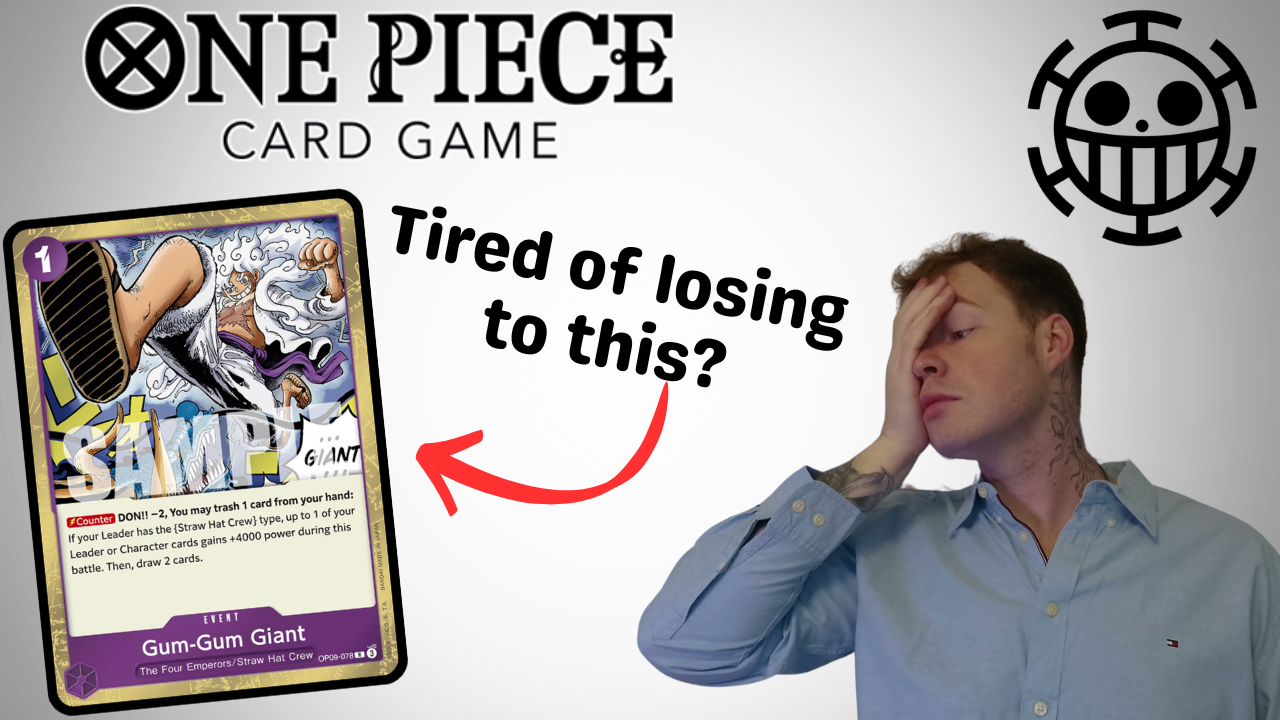At the end of this masterclass you will be able to successfully calculate if you should go for lethal and if so the best routes for calculating the best numbers. I really hope you enjoy it!
Should you go for lethal?
Before you attempt one single attack, you should figure out if you should go for lethal or not. There's a few questions you must ask yourself to do this:
- Am I going to die next turn?
- If I go for lethal and don't get it am I going to die?
- Is this deck notorious for playing events/heavy 2k lineups?
- Does this deck have any triggers that affect my ability to go for lethal?
- Check their trash for 2ks or event usage
Let’s look at the first bullet point || This is realistically a desperation play where you have no ability to survive and you have to go for game regardless of how unlikely ||
Let's look at the second bullet point || This is very different from the first point. This is stating that you have the option to go for lethal but it might not be the best play because if you take a turn off of clearing board or establishing characters and fail, then your opponent is likely to kill you on their turn ||
Third bullet point || Going for lethal against decks that play insane amounts of counter is terrifying and usually I don't go for lethal unless I have to, or I'm guaranteed to win based on math. So when playing against a deck like Purple Luffy, or Red Shanks with don active, you should be cautious overextending and throwing the game when you don't have to. ||
Fourth bullet point || Playing against decks that play triggers you have to keep in mind how likely it is you're able to get game based on the triggers your opponent is likely to play. An example of this is when we would play against Enel when they were playing heavy trigger packages, if every attack had to connect to win the game, we normally wouldn't go for game because it's just too risky. This is a common theme you will see most great players talk about. Card games have a lot of variance and you never want to leave a game to chance when you have the outcome to control it using patience and math.
If you fail to calculate lethal before committing to a play you're likely throwing the game and any good player is going to take advantage of your lack of commitment to the right target, or the lack of don used to attack.
Fifth bullet point || Basically just gauging information. If you want to go for lethal but see your opponent has 1 2k in the trash.. You likely aren’t going to connect
All but lethal
I talked about this in a previous video I made on Patreon but now that this is going to be fully public, I'll discuss it again for the people that have not heard this. All but lethal is a term I invented to describe the gamestate of putting your opponent in a position they literally can not survive next turn, but it's also impossible for them to go for lethal. (Please see video at Heart Pirates TCG for a video explanation of this in action)
Going for lethal
Now that you have decided to go for lethal we will discuss the steps you should follow these reads at first to determine sequencing order and don committed.
- How much don is active?
- How many cards are in hand?
- How much life do they have left?
- Do they have blockers?
First bullet point || If they have don active, figure out the meta relevant events people are playing with that leader. If that leader is notorious for playing no counter events, then do not respect their bluff.
Second bullet point || Always assume the worst case scenario when going for lethal if you can. Assume every card in their hand is a 2k counter. Usually you attack for 2k power over the leader power to ensure getting two cards out.
Third bullet point || I always figure out how many attacks I need to connect to kill them before attacking because if I need all my attacks to connect then you cant afford any singular attack to be small. But if you have multiple attacks over their life count then you can afford to attack lower at first to drain cards from their hand to go for guaranteed numbers with your other attackers. ||
Fourth bullet point || If they have blockers it really complicates the math because based on how much life and cards in hand its too much variance to explain completely. The number one rule for this that I can say is that if they have a 6k power or more blocker.. Stop attacking for 8ks because if they are scared of dying they're not going to turn their blocker sideways and 2k out. If they do that you're probably going to lose because they feel safe to do so, or they are bad. 7k attacks are fine because whatever power blocker they have out is just going to be used to get out of an attack they can’t counter.
Sequencing
Please be flexible in case new information comes to light when going for lethal.
For example - This happened to me round 1 of dallas day 2. I played against a reiju player where I had to go for game with a pudding, a teach, 9c mihawk, and my leader with 2 life left. She had 5 cards in hand. My goal was to not use teach because I would be wasting too much don to reach the threshold of attacking 5k.
I started 7k with pudding. She gives me 3 1Ks!! Now it got me thinking. I have to go for game with teach, but if I attack with 7k she could potentially counter the 8k on my next attack. This could have been greedy but I decided that with 2 cards left, I doubted both were 1ks. I decided to go 6k into leader then 2 9ks with leader and mihawk to win the game. Technically with 2 cards in hand you would want to do a 7k attack but because I saw her give me multiple 1k counters I assumed she was scared of not being able to counter a 9k from mihawk afterwards.
Now that you asked yourself the right questions you can determine the numbers and order you can attack with lets start with the basics.
- Always attack for the lowest numbers first.
- Always attack with the character most likely to be affected by triggers
- Always commit the least amount of don to make the necessary attack. (if this contradicts the trigger rule then ignore this rule most of the time)
- Try to avoid including characters under the leaders power level when going for game unless you have to
First bullet point || This should be simple enough if you're playing the game for a while but if you attack for bigger numbers first then you'll give your opponent the counter he needs from life to get out of the smaller attack. Usually every time they take a hit you want to go up at least 2k power on your next attack, or at least the same power level. ||
Second bullet point || This is a concept where you have to be familiar and up to date on the cards every meta deck is playing. If they have a card like red rock in their deck, attack with the 4c or lower characters first. If they are likely to play red rock AND 3000 worlds, then attack with your 3c characters first because they can be affected by red rock and 3000 worlds.
Third bullet point || So the reason this contradicts the second rule is sometimes we want to attack for 7k with our naturally 7k power character but they could have a trigger that affects our ability to go for game, so if that's the case then we shy away from this rule. HOWEVER there is a super super advanced meta game strat that if you attack with a character at 7k you want them to take it to use its trigger to kill a character that doesn't hinder your ability to go for lethal.
An example of this would be having a 6c Jozu on the field and your opponent is at 1 life with 5 cards in hand. You do this to bait them into taking the life that you don't normally expect them to take just so it makes your math easier going for game. This could be done at 1 or 2 life, but it usually only works on players who don't think very critically.
To continue on about the low don investment idea - basically we want to leave our opponent in the dark on how we are going to manipulate our done between our characters going for lethal most of the time.. Or even pivot to not going for lethal and playing blockers. The less don we have access to the less options we have. So unless you're 100 percent going for game you don't normally like to play around triggers if it means keeping your options open. And if your opponent takes the hit hoping to get a trigger it could make your math easier.
Fourth bullet point || So think of it like this. If you have a card like teach on the board. It would take 2 don for it to even need to be responded to by your opponent. Which means youre wasting don. Think of don like cards or counter. For every don you commit to a character it should use an extra 1k counter or an extra card out of your opponents hand.
If you have a base 5k character attacking into a base 5k leader it takes a 1k to get out of the attack
Add 1 don - 2k to counter
Add 2 don - 3k to counter
But if you attack with a character below the threshold it wastes don trying to attack. That's why you always save the small attackers for when you absolutely need an extra attack to win. It's not efficient to go for lethal with small characters unless you absolutely have to.
Actual math
I said this a bit earlier but before you go for game you want to determine how many cards and life your opponent has and figure out how many realistic attackers you have. If you have way more attacks than they have life then you want to use the first few attacks to drain 2 cards from their hand so that your next few hits are mathematically guaranteed to connect.
If you have characters that aren't viable attackers normally but you may need them because the math is looking scary I try to save as much don as possible for them to potentially attack, as long as I'm being efficient with my original attacks in case I don’t need them.
Random tid bits
There are some random things I also need to acknowledge but they weren’t big enough to categorize.
- When your opponent is at 0 life and they have a blocker you should attack for the same numbers if you can. If they can't get out of 1 then they can't get out of the other.
- Be on the lookout to exploit your opponent for over countering and greedily saving their blockers. If they go to 0 cards in hand and have a blocker, if you can K.O it or rest it then you can get game by them being greedy. Usually you only do this if you need 1 more attack and it's too impractical to attack with a low power character




 31 Mar 2025
31 Mar 2025
 10 minutes
10 minutes



